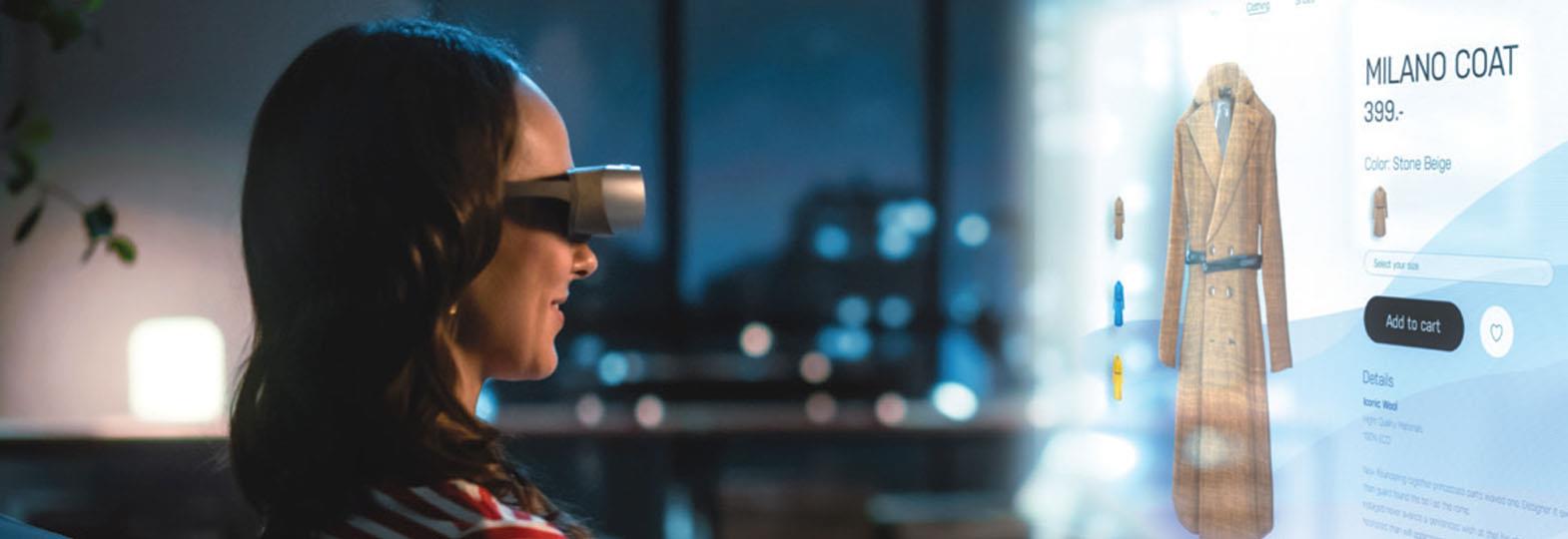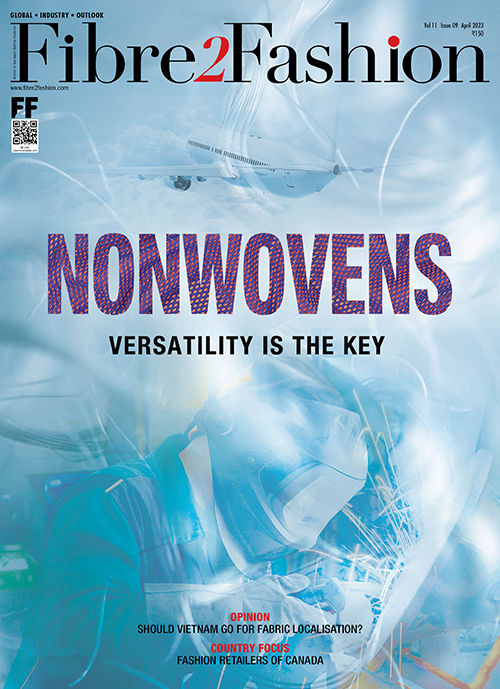The newly evolved e-commerce models like Q-commerce, S-commerce, and V-commerce can provide benefits to fashion retailers, but some are more challenging to pull off than others.
E-commerce has been taking the world by storm for many years now, and the fashion industry is no exception. Globally, fashion e-commerce makes up a huge 21 per cent of total fashion retail sales. In the US, fashion e-commerce accounts for around 23 per cent of all online retail sales. Moreover, at $871.2 billion, the fashion industry boasts the largest B2C e-commerce segment worldwide (Statista 2022).
With such huge success, it is no surprise that this commerce model has begun branching out into new territories. From e-commerce, three new models have evolved: quick commerce (Q-commerce), social commerce (S-commerce) and virtual commerce (V-commerce). This article discusses what these new models entail, how they’re transforming the fashion industry and the many benefits they provide to fashion retailers.
Q-COMMERCE
As the name suggests, Q-commerce is all about making the online shopping experience quick and convenient for consumers. This is achieved through features like instant checkout, one-click buying and on-demand delivery. In fact, Q-commerce suppliers typically provide a delivery speed of just 1 hour or less. In order to accomplish these impressive speeds, Q-commerce companies partner with several shipping companies, invest in efficiency-focused technologies and offer a small selection of products, increasing supply chain efficiency and improving inventory management.
Q-commerce may be an obvious choice for companies offering groceries and takeaway food services, but is it really a worthwhile investment for fashion retailers? Let’s take a look at some of the benefits.
How can fashion retailers benefit from Q-commerce?
Attract customers with increased delivery speed & convenience
Recent data suggests that there is a growing demand for Q-commerce apparel. In 2020, e-commerce consumers were asked to share their top reasons for shopping online. 33 per cent of respondents selected “easy returns policy”, 30 per cent selected “quick/easy online checkout process” and 28 per cent selected “next-day delivery” as some of their most decisive factors. This clearly highlights the two defining characteristics of Q-commerce – speed and convenience – as a huge draw for consumers.
Stand out from the crowd
Despite the clear consumer appetite for more quickly delivered clothing, there are currently very few retailers offering same-day delivery options. Because of this limited availability, any retailers willing to join this growing trend are sure to stand out from the crowd. It goes without saying that when it comes to Q-commerce, fashion products are some of the more difficult to manage efficiently. However, the handful of businesses pioneering the way forward have achieved commendable results. In 2021, Amazon, a retailer famous for its convenience and same-day delivery options, held an 11-12 per cent market share of total apparel sold in the US and a 34-35 per cent share of apparel sold online. ASOS, one of the world’s leading fashion retailers, also now offers a same-day delivery service called ‘ASOS Instant’ on select items. So, while Q-commerce apparel remains a logistical challenge, retailers willing to pave the way forward will certainly be in good company.
S-COMMERCE
S-commerce refers to the use of social media platforms to promote and sell products online. This commonly includes practices such as allowing shoppers to buy products through social media and sponsoring social media influencers to promote products. The S-commerce market was valued at about $90 billion in 2020 and is expected to grow 6.5x times by 2027. With such rapid growth and the huge rise in social media users across the globe, it is no surprise that S-commerce is becoming an increasingly popular avenue for e-commerce companies.
But how does the fashion industry fare in this new trend? S-commerce has already proven itself to be an incredibly promising opportunity for fashion companies around the world. According to Accenture, clothing is expected to account for 18 per cent of all global S-commerce purchases by 2025: the largest share of all industries. From collaborating with influencers to making use of social media apps’ in-built shop and ad features, the opportunities for fashion retailers to benefit from the S-commerce surge are endless. Let’s take a look at some of the advantages of integrating this modern business model.
How can fashion retailers benefit from S-commerce?
Increased customer reach and interaction
Unlike local fashion shows and clothing stores, social media tools and influencers have the power to reach a huge network of potential customers all over the world. This is no surprise given the extent to which people are relying on social media in their day-to-day lives. A 2020 study by Disruptive found that 84 per cent of US online shoppers consult social media for product reviews before making a purchase. According to another 2020 report by Composed, 60 per cent of US Gen Z shoppers turn to Instagram to discover new brands and products. Furthermore, there is a huge focus on style, fashion and beauty on many of the most popular social media platforms, including Instagram, TikTok and Pinterest. This means that customers are more likely to seek and interact with fashion influencers and brands, increasing visibility, reputability and driving sales in return.
In-built tools to effectively showcase and sell apparel
The top social media platforms for fashion brands – Meta (Instagram and Facebook), TikTok and Pinterest – all feature collaborative tools that enable companies to effectively market their products and allow shoppers to find the best options to suit their needs. For example, Instagram and Facebook both allow sellers to either set up a shopfront directly on the app or link an existing shop to the social media page.
Gain customer insights
Fashion retailers can also use social media to gather customer feedback and insights into customer preferences, which are incredibly valuable in improving product offerings and marketing campaigns. Countless tools can be used to garner these insights, including customer reviews, polls and surveys, influencer marketing, hashtag tracking, data analytics, social listening and more.
V-COMMERCE
The last decade has seen a dramatic increase in the development of virtual reality (VR) technologies and platforms such as Oculus VR, the Metaverse and Samsung Gear VR. As excitement continues to grow for virtual and augmented reality technology, V-commerce is also making its way into the spotlight. In a nutshell, V-commerce is a branch of e-commerce that refers to the buying and selling of products with the assistance of VR technology. This can include features such as VR showrooms that allow shoppers to view and purchase products in a virtual store, VR tours that take customers on a virtual tour of locations they wish to visit, and VR ‘try-ons’ which allow shoppers to virtually try on clothes they are interested in buying.
How can fashion retailers benefit from V-commerce?
VR try-ons
During the pandemic, VR try-ons surged in popularity as worldwide lockdowns and restrictions prevented shoppers from accessing traditional in-store try-ons. While some predicted that this trend would die down once ‘real life’ dressing rooms reopened, this has been far from the case. Many notable brands such as Prada, L’Oreal and Converse have successfully collaborated with social media apps to bring the in-store dressing room experience to online shoppers, benefitting both the businesses and the consumers. For the busy modern-day shopper, it is far more convenient to virtually try-on an apparel from the comfort of their own home before making the decision to buy. For retailers, this feature significantly reduces returns, increases conversions, and cuts the costs associated with staffing and upkeeping traditional dressing rooms.
VR fashion shows and a more immersive shopping experience
Another emerging trend within V-commerce is the rise in VR fashion events and videos. While this is still a very new phenomenon, several top fashion brands have been taking promising strides into the arena. Since 2020, Prada has been hosting VR fashion shows and videos to offer a more immersive online experience to its customers. Several other brands have also chosen to hold VR shows and presentations, including Balenciaga’s ‘Afterworld’ and Hanifa’s all-digital runway. These innovative events come with numerous benefits for fashion retailers. Unlike ‘real life’ fashion show attendees, VR show viewers are able to enjoy an immersive runway experience without ever needing to leave their homes. This means far more potential buyers are able to access the content, increasing exposure and driving sales in turn. VR fashion shows also provide both retailers and attendees with a more cost-effective alternative to traditional shows, which can be expensive to host and attend.
SUMMARY AND OUTLOOK FOR NEW E-COMMERCE FASHION MODELS
In summary, if you are wondering whether it is worthwhile for fashion retailers to invest in the new e-commerce models, the short answer is: yes. From garnering a global customer reach to increasing engagement and gaining invaluable consumer insights, the potential benefits are endless.
However, it is worth noting that some of these models are more challenging to pull off than others. Q-commerce remains a rare sight within the fashion industry due to logistic and time-management hurdles. V-commerce bears a promising outlook for the coming years as VR technology continues to develop but currently lacks a large customer base and polished presentation. On the other hand, S-commerce has already proven its success in producing outstanding results for fashion retailers across the globe.











Comments